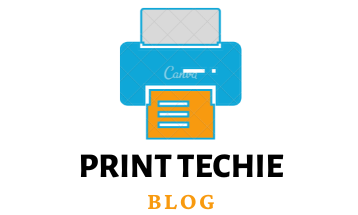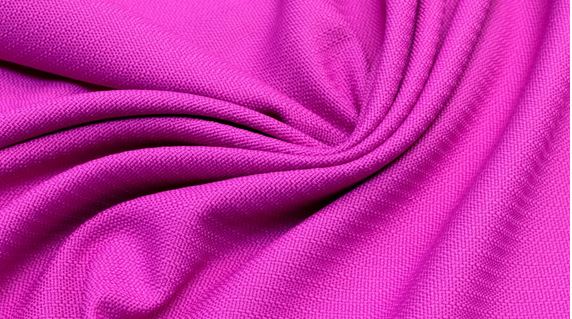Welcome to the vibrant world of sublimation printing on polyamide! This guide is your key to mastering the art of transferring breathtaking designs onto polyamide fabrics. Whether you’re a hobbyist or a professional, understanding the process, temperature, and chemical properties of polyamide will elevate your projects to new heights. Polyamide, known for its elastic, lightweight, and resistant nature, offers a perfect canvas for durable and vivid prints. Dive into the fascinating science behind sublimation, prepare with the right equipment and materials, and navigate through common challenges with ease. Let’s embark on this colorful journey together, transforming your creative visions into wearable masterpieces with the magic of sublimation on polyamide.
Can you sublimate on Polyamide?
Yes, you can sublimate on polyamide fabrics. Polyamide, commonly known as nylon, is well-suited for sublimation due to its synthetic nature and compatibility with the sublimation process. This technique involves transferring designs using special inks that turn into gas under high heat and pressure, bonding with the fabric’s fibers. Polyamide’s heat-resistant properties and smooth surface make it an excellent medium for vibrant, long-lasting prints. However, achieving optimal results requires careful temperature and pressure control to prevent damage to the fabric and ensure the dye’s thorough absorption. With the right preparation and equipment, sublimation on polyamide can yield stunning, durable designs ideal for various applications, from fashion to functional textiles.
Understanding Polyamide and Its Properties
Polyamide, commonly known as nylon, is a type of synthetic fiber widely recognized for its remarkable characteristics. As a polymer, it is made up of long chains of amide molecules, which contribute to its elastic and lightweight nature. Unlike natural fibers, polyamide boasts superior resistance and durability, making it an excellent choice for various applications, including clothing and technical gear.
One of the most notable properties of polyamide is its resistance to wear and tear. This material is capable of withstanding significant stress and strain, making it ideal for sporting and outdoor apparel. Additionally, its elastic nature allows for garments that offer comfort and flexibility, adapting to the wearer’s movements without losing shape.
Polyamide’s ability to retain color and resist fading is another key advantage. When sublimated, the dye bonds deeply with the surface of the fabric, resulting in vibrant and long-lasting prints. This chemical process changes the dye from a solid state to a gaseous state, allowing it to penetrate the fabric and permanently bond with the fibers.
Furthermore, polyamide is known for its lightweight and compact structure. Despite its thinness, it provides excellent protection against the elements, making it a popular choice for protective clothing and accessories. Its synthetic composition also lends itself to easy care and maintenance, often drying quickly and requiring minimal ironing.
In summary, polyamide stands out as a synthetic polymer with impressive elastic, lightweight, and resistant properties. Its suitability for sublimation makes it a favored material for creating custom designs and patterns on a wide range of products. Understanding these properties can help you better appreciate the versatility and potential of polyamide in various technological and industrial applications.
The Science of Sublimation on Polyamide
Sublimation is a fascinating process that transforms a substance directly from a solid to a gaseous state, bypassing the liquid stage. This technique is especially effective on polyamide fabrics, where it produces vibrant and permanent prints. Understanding the science behind sublimation on polyamide requires a basic grasp of temperature, pressure, and the chemical nature of the fabric.
At the heart of this process is the heat application. Temperature plays a crucial role in sublimation, as it must be high enough to cause the dye to sublimate—that is, to change from solid to gas without becoming liquid. This temperature must be carefully controlled to avoid damaging the polyamide fibers, which are synthetic and sensitive to excessive heat.
Pressure is equally important in the sublimation process. It ensures that the gaseous dye makes a strong and even contact with the surface of the fabric. This pressure must be consistent and sufficiently high to facilitate the deep penetration of the dye into the fibers, ensuring that the print is not only vibrant but also durable and resistant to fading.
The chemical interaction between the dye and the polyamide fibers is what makes the sublimation print permanent. Unlike traditional printing methods that merely lay the dye on top of the fabric, sublimation allows the dye to become part of the material itself. This chemical bond results in prints that can withstand washing, ironing, and daily wear without losing their color intensity.
Polyamide’s unique characteristics make it an ideal candidate for sublimation. Its synthetic fibers have a specific melting point and chemical composition that allow them to bond effectively with the sublimated dye. The elastic nature of polyamide does not hinder the process, ensuring that the fabric retains its shape and texture after sublimation.
Read: How to Make Sublimation Coating for Stainless Steel?
Preparation and Requirements for Sublimating on Polyamide

Before embarking on the sublimation journey with polyamide, it’s crucial to prepare adequately and understand the necessary equipment and materials. This preparation ensures that the process is smooth and the results are of high quality.
Pre-treatment of the polyamide fabric is the first step. This involves ensuring the fabric is clean and free of any chemicals or oils that might interfere with the dye’s ability to sublimate effectively. The surface of the fabric should be smooth and uniform to allow for even dye distribution.
The equipment needed for sublimation on polyamide includes a high-quality printer capable of handling sublimation inks, sublimation ink specifically formulated for polyamide fabrics, and a heat press. The heat press is vital for applying the necessary temperature and pressure to transfer the dye onto the fabric.
Materials play a significant role in the success of the sublimation process. Besides the polyamide fabric, you’ll need sublimation paper to print your designs before transferring them. This paper is designed to release the dye under heat and pressure, allowing it to sublimate onto the fabric’s surface.
Understanding the characteristics of polyamide is crucial when preparing for sublimation. This material’s absorption properties differ from other fabrics, which can affect how it takes up the dye. The temperature settings on the heat press must be adjusted to suit polyamide’s specific heat tolerance to avoid damaging the fabric while ensuring the dye sublimates correctly.
Step-by-Step Guide to Sublimation on Polyamide
Sublimation on polyamide can be a rewarding process, yielding vibrant and lasting designs. To ensure success, follow this step-by-step guide:
1. Preparing Your Design: Start by creating or selecting your design on a computer. Use software compatible with your printer to ensure the design is properly formatted and colored. Remember, the design will be transferred in reverse, so adjust any text or directional elements accordingly.
2. Printing the Design: Print your design onto sublimation paper using a sublimation printer. Ensure the printer is filled with sublimation ink, specifically suited for polyamide fabrics. The quality of the print on the paper will directly affect the final outcome on the fabric.
3. Preparing the Polyamide Fabric: Prepare your polyamide fabric by ensuring it is clean and smooth. Any wrinkles or debris on the fabric’s surface can lead to imperfections in the final print. Pre-pressing the fabric in the heat press for a few seconds can remove moisture and wrinkles, providing a clean slate for sublimation.
4. Aligning the Paper and Fabric: Place the sublimation paper on the polyamide fabric, with the printed side facing down. Secure the paper in place to prevent it from moving during the process. This step is crucial for achieving sharp and precise designs.
5. Sublimation Process: Transfer the design to the polyamide fabric using a heat press. Set the heat press to the recommended temperature and pressure for polyamide. Typically, the temperature ranges from 380°F to 400°F (193°C to 204°C), and the time can vary from 30 seconds to a minute, depending on the fabric thickness and color depth desired.
6. Peeling and Cooling: After the heat press cycle is complete, carefully remove the fabric from the press. Peel off the sublimation paper while the fabric is still hot for the best results. Allow the polyamide fabric to cool down. The design should now be vividly transferred onto the fabric, with colors that are both bright and resistant to fading.
7. Post-Press Considerations: Inspect the polyamide fabric for any issues and re-press if necessary. Some designs may require a second press to fully sublimate the dye into the fabric’s fibers.
By following these steps carefully and using the proper equipment and materials, you can achieve professional-quality sublimation prints on polyamide fabric. The key is to maintain consistent temperature and pressure throughout the process and to use high-quality inks and papers designed for sublimation. With practice, you can create stunning, durable designs on polyamide garments and items.
Read: Can You Sublimate on Nylon Fabric?
Challenges and Solutions in Polyamide Sublimation
While sublimating on polyamide can yield vibrant and durable designs, it’s not without its challenges. Understanding potential issues and how to address them is key to achieving consistent, high-quality results.
1. Dye Migration: One common issue with polyamide sublimation is dye migration, where colors bleed outside their intended areas, leading to blurry designs. This is often due to excessive heat or prolonged pressure during the sublimation process.
Solution: To prevent dye migration, carefully monitor the temperature and time settings on your heat press. Using a lower temperature and shorter time while maintaining enough pressure can help minimize this issue. Additionally, using high-quality sublimation paper and inks specifically formulated for polyamide can reduce the likelihood of dye migration.
2. Temperature Sensitivity: Polyamide fibers can be sensitive to high heat, which might cause them to melt or deform if the temperature during sublimation is too high.
Solution: It’s crucial to find the right balance of heat that is sufficient to activate the dye without damaging the fabric. Conducting a few test prints on scraps of polyamide fabric can help you determine the optimal temperature settings for your specific heat press and fabric type.
3. Fabric Elasticity: The elastic nature of some polyamide fabrics, especially those blended with elastane, can pose challenges during sublimation. The fabric may stretch during the process, leading to distorted designs.
Solution: To mitigate this, ensure the polyamide fabric is securely fastened to the sublimation paper and the heat press platen. Using adhesive spray or heat-resistant tape can keep the fabric in place during sublimation. Additionally, opting for a heat press with adjustable pressure settings can help apply even pressure without overstretching the fabric.
4. Color Fidelity: Achieving accurate and vivid colors on polyamide can sometimes be challenging, as the material’s absorption properties and chemical composition can affect how colors are rendered.
Solution: Performing color calibration tests with your printer and sublimation inks can help you adjust the color output to match your design intentions more closely. Using ICC profiles specific to your printer, ink, and polyamide fabric can also improve color accuracy.
In conclusion, while challenges exist in sublimating on polyamide, they can be overcome with careful process management, proper material handling, and by using the right equipment and techniques. By addressing these challenges proactively, you can ensure that your sublimation projects on polyamide yield impressive and lasting results.

